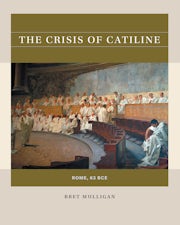The Artists of the Ara Pacis
The Process of Hellenization in Roman Relief Sculpture
By Diane Atnally Conlin

360 pp., 8.5 x 11, 261 illus., notes, bibl., index
-
Paperback ISBN: 978-0-8078-6899-7
Published: November 2011
Studies in the History of Greece and Rome
Buy this Book
Awards & distinctions
A 1997 Choice Outstanding Academic Title
Originally published in 1997.
A UNC Press Enduring Edition -- UNC Press Enduring Editions use the latest in digital technology to make available again books from our distinguished backlist that were previously out of print. These editions are published unaltered from the original, and are presented in affordable paperback formats, bringing readers both historical and cultural value.
About the Author
Diane Atnally Conlin received her Ph.D. in classical art and archaeology from the University of Michigan. A fellow of the American Academy in Rome, she has taught Roman art and archaeology at the University of Michigan.
For more information about Diane Atnally Conlin, visit
the
Author
Page.
Reviews
“An important and intelligent contribution to our knowledge about the Ara Pacis and the practice of Roman sculptors in general. . . . [Conlin] has taken a much needed closer look at an artistic hallmark of the Augustan age and initiated us into one of its basic characteristics.”--Classical Journal
“Conlin repeatedly demonstrates how a fresh approach can tease new meanings from even an exhaustively studied monument. . . . An advocate of ‘close looking,’ Conlin will inspire students to mine the surviving visual evidence for a deeper understanding of antiquity.”--Classical World
“This lavishly illustrated study represents an important contribution to our understanding of the production of Roman sculpture.”American Journal of Archaeology
“[This book] will inspire others to take a second look at other Hellenizing sculptures, and actually demonstrates what has only before been assumed.”--Bryn Mawr Classical Review
“The quality of Conlin’s observations is outstanding, and much will be of great assistance to students of stone-carving in Augustan Rome.”--Times Literary Supplement
“A meticulous analysis of the sculpting of Rome’s Ara Pacis Augustae. . . . Essential reading for students of Roman art and sculpture of any period.”--History: Reviews of New Books



